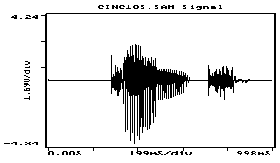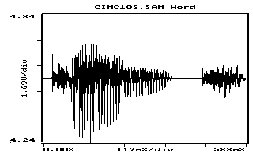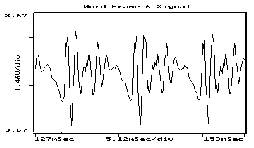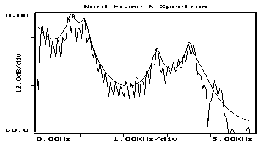
Fig. 1. - Silence/speech/silence (word cinci (five)).

Fig. 2. - Endpointed speech.
2.2. Short-time spectrum analysis
Short-time spectrum analysis is the key feature of speech processing. It has been accomplished by using both FFT and LPC analyses [3] applied to 256 samples of speech windowed with a Hamming window and the predictor coefficients are computed by using Levinson-Durbin recursive algorithm. From each segment of speech a 12-component vector is obtained by averaging the LPC spectrum (Fig. 3 and 4). These vectors are then vector-quantized in order to obtain speech compression and to reduce the calculus time. The predictor can be written as
and the transfer function of the
vocal tract
where ak(k=1,2, ...,p)
are the predictor coefficients
and
Fig. 3. - A speech frame.
Fig. 4. - LPC and FFT spectra.
179


 is the LPC spectrum.
is the LPC spectrum.




